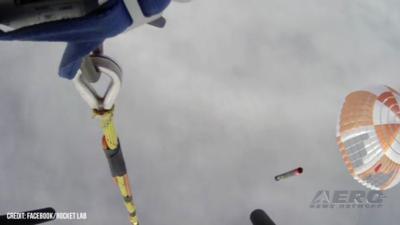Rutherford Rocket Engine Performs to Specifications
Mired in relative obscurity in the long, cold shadows of powerhouses the likes of SpaceX, United Launch Alliance, and Blue Origin, California’s Rocket Lab has quietly been making a veritable killing in the commercial space business. Since its first orbital launch in January 2018, the company’s Electron launch vehicle has become the second most frequently launched U.S. rocket annually, delivering 149 satellites to orbit for private and public sector organizations.

To date, 26 Electron rockets have been driven heavenward by Rocket Lab’s proprietary Rutherford liquid-fuel rocket-engine. Named for renowned New Zealand-born physicist, Ernest Rutherford, the engine is a diminutive, 25-centimeter (diameter), 35-kilogram marvel that blasts out a disproportionate and impressive 5,600-pound-feet of thrust.
Rutherford engines, after the fashion of all space-going hardware, are complex gadgets, sporting electron-beam-melted 3D-printed components, one-megawatt lithium-polymer-batteries, rotodynamic pumps, dual brushless DC electric motors, myriad computers, convoluted wiring-harnesses, and a galaxy of similarly fiddly bits and bobs.
On 02 May 2022 a commercial rideshare mission dubbed There and Back Again saw a Rutherford-powered Electron rocket carry 34 satellites to Earth orbit. The mission marked the first instance in which Rocket Lab attempted a mid-air capture of an Electron rocket’s first stage as it descended back through Earth’s atmosphere. The maneuver entailed parachutes, a Sikorsky S-92 helicopter, and a great deal of planning and skill. After plucking the booster stage from under-canopy, the helicopter descended and released its prize—fuselage, flight-controls, engines, and all—to splash softly down into the South Pacific.
Remarkably, Rocket Lab has refurbished and successfully test-fired one of the recovered stage’s Rutherford engines—a significant technical achievement in the company’s efforts to make its Electron launch vehicle the world’s first reusable small orbital rocket.
Following its retrieval and refurbishment, the born-again Rutherford engine passed the selfsame rigorous acceptance tests Rocket Lab performs on every one of its engines—including two-hundred-seconds of engine fire and multiple restarts. Data from the test fire showed the engine produced its full design thrust of 21kNs within one-thousand-milliseconds of ignition, and performed to the standard of a newly-built Rutherford engine. The refurbished engine will henceforth serve Rocket Lab in life analyses and design of new engines and engine components.

Rocket Lab founder and CEO Peter Beck remarked: “We’ve always been at the forefront of innovation with Electron, having pushed the boundaries of many technologies including carbon composites, electric turbo-pumps and 3D printed rocket engines. Now, we’re leading the pack once again bringing reusability to small launch vehicles.” Mister Beck added: “Being able to re-fly Electron with minimal refurbishment is the ultimate goal, and so the fact that the recovered components on this engine performed on the test stand with minimal rework is further validation that we’re on the right path
Preparations are underway for Rocket Lab’s next recovery mission, which will again include an attempt to catch an Electron first stage with a helicopter—but this time fly it back to land.
 Bolen Gives Congress a Rare Thumbs-Up
Bolen Gives Congress a Rare Thumbs-Up The SportPlane Resource Guide RETURNS!!!!
The SportPlane Resource Guide RETURNS!!!! Buying Sprees Continue: Textron eAviation Takes On Amazilia Aerospace
Buying Sprees Continue: Textron eAviation Takes On Amazilia Aerospace Hawker 4000 Bizjets Gain Nav System, Data Link STC
Hawker 4000 Bizjets Gain Nav System, Data Link STC Echodyne Gets BVLOS Waiver for AiRanger Aircraft
Echodyne Gets BVLOS Waiver for AiRanger Aircraft




